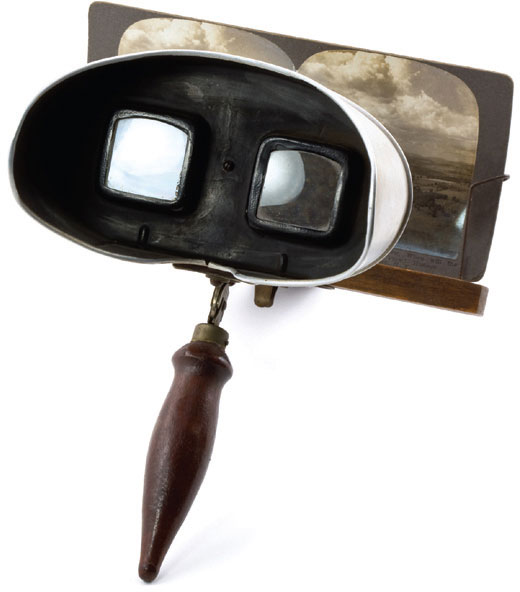Stereoscopic Photography
A THREE-DIMENSIONAL EFFECT
Beginning in the 1850s and remaining wildly popular into the early 20th century, stereography created an optical illusion that provided the viewer with a three-dimensional image. The method involved using two cameras mounted side by side (roughly 2 1/2 inches apart—the average space between human eyes) to simultaneously take “duplicate” exposures of a subject and then printing the two images side by side. When viewed with a device called a stereoscope, the pictures appeared to merge together, resulting in the three-dimensional effect.

Attempts at creating three-dimensional images began in the 1840s using daguerreotypes, but the process proved unwieldy and results were unsuccessful. Not long after, with the advent of the wet process using glass plates, it became much easier to make the dual exposures and the dual prints necessary for the effect. Still, determining the right spacing of the cameras and the most effective distances to shoot from took further years of experimentation and trial and error, but by the mid 1850s the method had been perfected, and it took off. Oliver Wendell Holmes invented a handheld stereoscope in 1861, and millions of “stereographs” were sold in the coming decades. Much like televisions in the mid-20th century, it was quite common to find a stereoscope and a pile of stereographs in the living rooms of middle- and upper-class families.
While demand waned considerably by the 1920s, development of stereographic cameras continued through into the 1940s. Today there are still a couple of companies making stereographic cameras. —DJG

